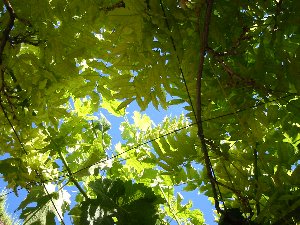
Industry Jargon - "seeing the forest through the trees"

The New Markets Tax Credit and Renewable Energy industries use lots of “jargon”. To help the newcomer out, below is a list of some of the common terms and acronyms used and their definition. Please note, these are simplified definitions of sometimes highly technical terms, and should not be relied on for transaction structuring and compliance purposes.
[NOTE: This section under construction. More terms will be added over time]
New Markets Definitions
“CDE” means a Community Development Entity, which is an entity certified by the CDFI as a development entity as having as its primary mission serving or providing investment capital for, low-income communities or low-income persons; and must maintain accountability to low income communities through advisory or governing board representation.
“Investment Fund” refers to an entity formed (usually an LLC) to aggregate tax credit investor equity with debt in order to increase returns to the tax credit investor. Investment Funds use the aggregate funds to make QEIs (see definition below) that trigger the NMTC.
“NMTC” or “New Markets Tax Credit” refers to a 39% tax credit allowed under IRC section 45D for QEIs made in CDEs.
“QALICB” means a Qualified Active Low-Income Community Business as defined by the NMTC rules. Generally, this is a business with at least 50% of its gross income derived from the conduct of its business within a Low-Income Community. When trying to determine whether a business is a QALICB, there are additional detail criteria that must be considered.
“QCT” means a Qualified Census Tract, which is one that meets the definition of a low income community.
“QEI” or “Qualified Equity Investment” means an equity investment in a CDE.
“QLICI” or “Qualified Low Income Community Investment” means a debt or equity investment in a QALICB.
Renewable Energy Definitions
“AC” or
“Alternating Current” means an electric current that
reverses its direction at regular intervals or cycles. In the
“Alternative
Fuel” is a term used for
"non-conventional" transportation fuels derived from natural gas (propane,
compressed natural gas, methanol) or biomass materials (ethanol,
methanol).
“Amp” or
“Ampere” is a unit of
measure for an electrical current; the amount of current that flows in a circuit
at an electromotive force of one Volt and at a resistance of one Ohm.
“Avoided
Cost” means the cost it
would take for a utility company to generate the next increment of power. Many QF’s are able to sell their power
to utilities at avoided cost under PURPA.
“Barrel” or
“BBL”
is a
unit of volume equal to 42
“Biodiesel” means an
alternative fuel that is made from fat or vegetable oil. It generally can be
used in any diesel engine with few or no modifications. Although biodiesel does
not contain petroleum, it can be blended with diesel at any level or used in its
pure form. Blends are typically
designated as B[X], where X is the percentage of biodiesel in the blend. Thus, B20 is a mixture that contains 20%
biodiesel and 80% petroleum diesel.
A federal tax credit is available for blending
biodiesel.
“Biomass”
means
an organic
(plant or animal) material that is available on a renewable basis, including
agricultural crops and agricultural wastes and residues, wood and wood wastes
and residues, animal wastes, municipal wastes, and aquatic plants. Biomass is a fuel for power plants that
qualify for federal Production Tax Credits.
“BTU” or
British thermal unit means the
amount of heat required to raise the temperature of one pound of water one
degree Fahrenheit.